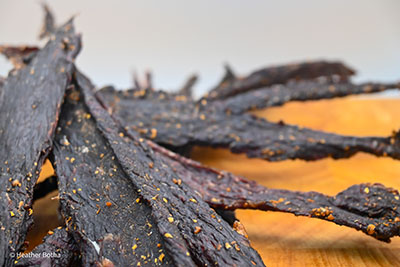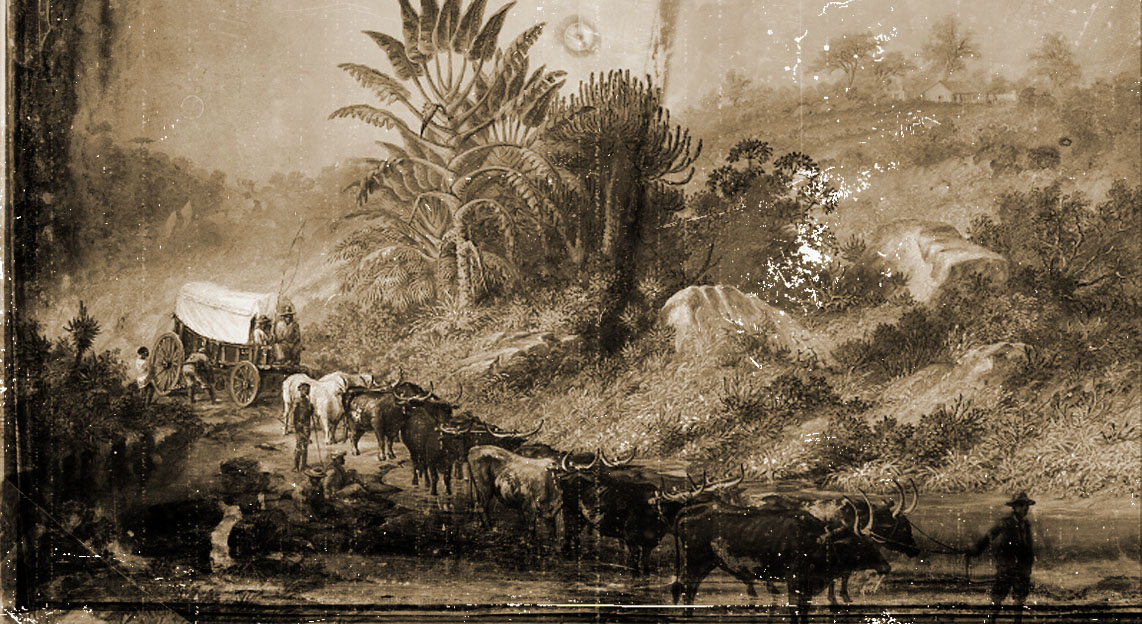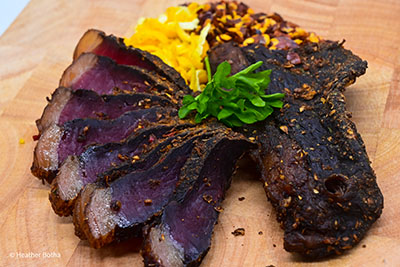WHAT IS BILTONG?
Biltong is a cured and dried meat developed by the Afrikaner trekkers of South Africa as a way of preserving meat for leaner times but which also turned out to be delicious. It is extremely high in protein, up to 67%, and value for money with each 100g of biltong being made from almost 200g of meat. Our biltong is made from the best British and Irish beef silverside, a prime cut from the rump of the cow which has exactly the right texture, flavour and fat content for perfect biltong. We carefully hand cut it into steaks which are cured in our secret spice mix and then slowly air dried. The drying process removes moisture which concentrates the flavour and the nutrient content of the beef. The low temperature drying means that none of the nutrients are damaged by heat so it is ideal for anyone on a paleo-diet or sportsmen trying to build lean muscle mass.

BILTONG NUTRITION
Biltong is naturally high in protein, it takes over 200g of meat to produce 100g of biltong, so it is a fantastic component of a low carb or paleo-diet as well as being just about the tastiest thing around.
As an artisan natural product the nutritional content of biltong varies but below are some typical values for standard medium dry, medium fat biltong.
NUTRITION PER 100g SERVING
| Calories | 300 |
| Total Fat | 12g |
| Saturated Fat | 4g |
| Trans Fat | 0g |
| Cholesterol | 140mg |
| Sodium | 1700mg |
| Carbohydrates | 4g |
| Sugars | 4g |
| Protein | 80g |
| Vitamin C | 15% |
| Iron | 20% |
BILTONG HISTORY
Biltong was developed in South Africa by the Afrikaner voortrekkers as a way to store meat in the dry conditions of the highveld and carry it easily on their trek wagons. The word biltong is derived from the Dutch bil (rump) and tong (tongue) and refers to the cut of meat used and the shape of the cut meat to be dried.
Originally made from game meat such as eland, springbok and hartebeest most biltong today is made from beef and that primarily silverside. Our biltong is made from prime British and Irish beef, marinated in our secret spice and herb mix and cured for approximately 5 days, much as the voortrekkers did in days of yore.


